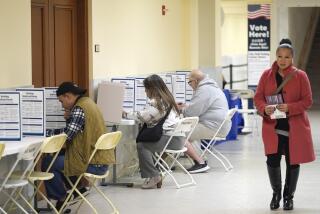Peace dividend
IT HAS BEEN NEARLY HALF a century since President Kennedy created the Peace Corps, the volunteer program that lets young Americans serve overseas in developing countries. Over the years, the corps’ popularity with the public has swung back and forth. Applications surged during the war protests and love-ins of the 1960s and ‘70s but were flat during more placid (and prosperous) decades such as the 1990s.
Today, the Peace Corps is booming again. This year, it accepted 7,810 volunteers -- the largest number in 30 years -- from more than 11,000 applicants, up 20% since 2000.
It’s hard to know exactly what’s behind the resurgence. Most volunteers are recent college graduates who came of age with wars in Afghanistan and Iraq as a backdrop. And after 9/11, the urge to represent the U.S. overseas, whether in the military or in the Peace Corps, was a natural reaction.
This is also the generation that has seen pop stars and moguls alike take up (and even lead) the charge to address global issues such as poverty and access to healthcare. When both Bono and Bill Gates publicize a cause, it’s a pretty safe bet that the vast majority of young people in America will know about it.
The corps was an outgrowth of the Cold War -- the idealistic expression of containment, designed to counter Soviet influence around the world. But having tens of thousands of young Americans spending two years in some of the poorest and remotest places on Earth, helping with literacy or public health projects, is still a hugely beneficial form of public diplomacy. It is also, as any survey of the vast literature of returning volunteers will attest, a life-changing experience.
Congress allots $300 million a year to the Peace Corps. It may want to consider expanding a program that produces much-needed goodwill for the country. As Kennedy said: “The responsibility for peace is the responsibility of our entire society.... Our Peace Corps
More to Read
Sign up for Essential California
The most important California stories and recommendations in your inbox every morning.
You may occasionally receive promotional content from the Los Angeles Times.










